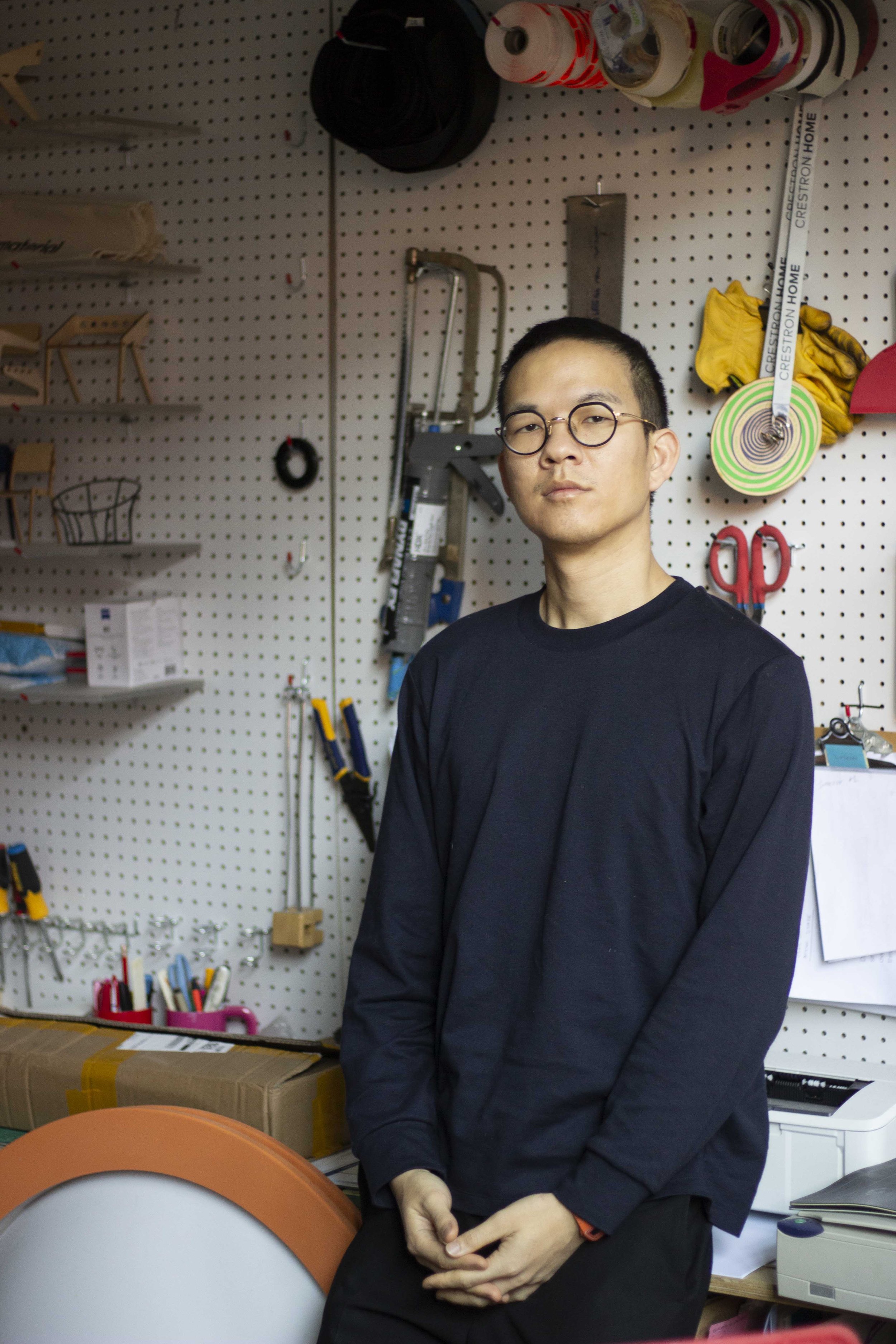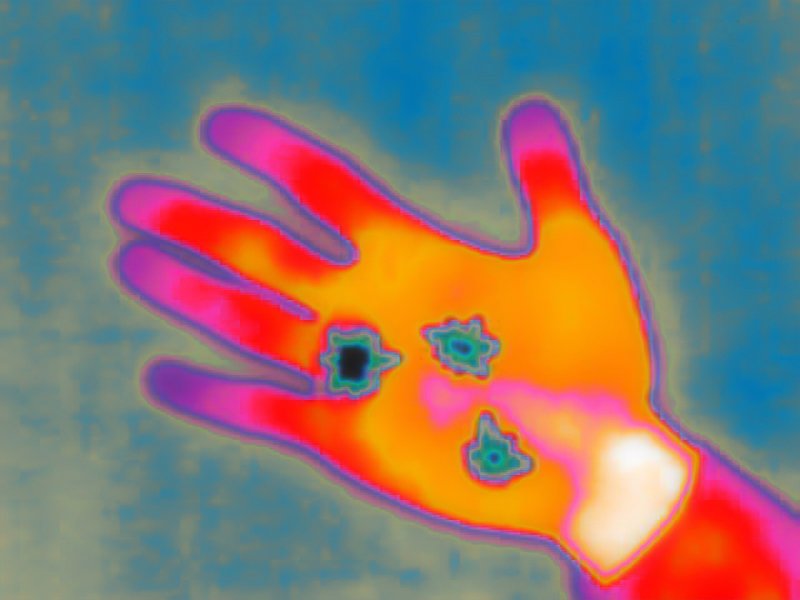10 Questions with Chihyang Hsu
Chihyang Hsu is an interdisciplinary artist who works with photography, video, painting, and installation. His color blindness is the seed of his creativity. As a result, he complicates visual communication and embodies the uncertainty and ambiguity he constantly encounters. Hsu has volunteered with visually-impaired communities for over two years to support disadvantaged individuals. He receives the Directors fellowship from the International Center of Photography, NY, and the Master of Fine Arts degree from the School of Museum of Fine Arts at Tufts University, MA. Hsu currently lives and works in New York City.
Chihyang Hsu - Portrait
ARTIST STATEMENT
“My art concerns computational photography and the possibility of visual communication. At the age of nine, I was diagnosed with color blindness. The moment struck me when I realized the world is more complicated than I had imagined—it is beyond the limit of my understanding and perception. The sense of being submerged pushed me to examine the common practice of individual communication. Volunteering with visually-impaired organizations makes me understand that haptics is crucial for the low-sighted to navigate daily life. Consequently, it inspired me to use a thermal camera to create images incorporating heat, which visualizes the sense of touch.
In this thermal photo project, I look into the everyday spectacles that we human race create for ourselves. Over the past year, I took photos at parks, museums, gyms, supermarkets, subway stations, and zoos. The constructions mediate our interaction with the world. We build cold monuments to commemorate heartening spirits; we travel faster but pay less attention to our surroundings; we admire freedom but enclose animals with artificial façade. These thermal images provide an alternative visual connection of the surfaces and reveal the energy we can’t see with the naked eye.”
— Chihyang Hsu
Heat is Touch, 19.9°C, Thermography, 80x60 cm, 2021 © Chihyang Hsu
INTERVIEW
First of all, introduce yourself to our public. Who are you, and how would you describe yourself as a person and an artist?
My name is Chihyang Hsu, but my friends call me Yang. I make goofy things and label them as artwork. Language, communication, perception, time, and space are some of my favorite themes. I was born and raised in Taiwan, and I have also spent time in Switzerland and China. I currently reside in New York City.
When did you first realize you wanted to be an artist?
I used to think of an artist as someone who creates artwork that provides cash or exhibition possibilities, but I now struggle to define the term because it does not correspond to what I seek. I only create art because I'm curious about what it is and what it involves on a personal level. A creative response to life's phenomena, such as time, space, being, and any belief system, is what it means to be an artist. Art helps us connect with others who share our interests. I've been examining these concepts for almost five years now.
Heat is Touch, 21.3°C, Thermography, 80x60 cm, 2022 © Chihyang Hsu
Heat is Touch, N, Thermography, 80x60 cm, 2022 © Chihyang Hsu
What is your artistic background? And how did you develop into the artist you are today?
I started taking pictures with my sister's small digital camera while I was in middle school, which was seventeen years ago. I started creating images after that and kept doing so throughout high school and college. I attended a business school and was the funny guy walking around with a DSLR taking pictures of projects. I asked 100 people, including friends and teachers from my last semester, to list their dream vacation destinations on a portable whiteboard, and I then snapped pictures of them holding it. I showed them the picture again during the Covid-19 pandemic, which was ten years later. It is the most valuable piece of work I produced in the beginning. I worked at a gallery after I graduated and did freelance photography of interiors and architecture. However, I was frustrated by my color blindness. I decided to use art to push my weakness even further, so I traveled to the most outstanding photo school in New York City to perfect my abilities and discover the principles of creative thinking. The artist and educator Nayland Blake significantly impacted me. They helped me realize that creating art is a lifelong endeavor and that empathizing is an essential first step.
You work with different mediums, such as photography, video, painting, and installation. How does your approach change based on the medium you use?
Different qualities can be seen in every medium. In contrast to video, which allows for linear storytelling and sound design, photography exhibits a strong sense of being "fixed in time" and "taken from reality." Through colors and shapes, painting conveys evidence of bodily engagement. The exhibitions I create are a singular installation experience consisting of various media.
Your biography says, "His color blindness is the seed of his creativity." How does this influence your work?
I was given a color blindness diagnosis when I was nine years old. I suddenly realized that the world was more complicated than I had anticipated at that point. It spread further beyond what I could perceive. My vision became obscured by a constrictive chromogenic bandwidth. In order to blend in with the crowd, I need to get around the hazy visual evidence because failing to distinguish specific spectral wavelengths makes it harder for me to engage with others.
We rely on the wealth of language to translate experience into coherent meaning to explicitly explain the world. However, there are times when I think language loses its meaning and other times when I think it falls short of expressing the intricacy of the earthly state in which we find ourselves. I can utilize art to broaden my vocabulary in verbal and visual communication.
When I first heard the phrase "color blindness," I assumed it resulted in a black-and-white vision. Ironically, it turns out that I hold this major misperception. I can see colors, but I cannot identify them all. Some colors are hard for me to describe, and I become stuck in a visual-verbal limbo since I'm not sure what I'm seeing. I use thermal photography to represent an alternative viewpoint created by uncertainty.
Heat is Touch, 4.7°C, Thermography, 80x60 cm, 2021 © Chihyang Hsu
Heat is Touch, 21.2°C, Thermography, 80x60 cm, 2022 © Chihyang Hsu
You use thermal photography as a result of your color blindness. Can you explain to us your creative process?
Because thermal photography creates a visual language based on heat rather than light, I find it appealing. Heat makes things feel good, and when something feels good, we want to play with it. It's similar to petting animals. I have an easy creative process. Every day, I carry a little thermal camera, which I use whenever I feel like touching something. I then use software to produce several color-coded images based on the same thermal data, which I then overlay. The result reveals the relationships between items in terms of heat.
Many of your series, such as Mapo Tofu, Introvert, or A Family Photo, deal with the theme of memories and family. What does this theme represent for you? And what other themes do you pursue?
These pieces were created in the first and second years after my arrival in the United States. I was forced to reflect carefully on my identity and how I became the person I am today after experiencing the Covid epidemic in a different culture. Because I can now view them in the distance and reassess our relationships, family history and memories have become more interesting. In addition, my memory is never good, so there is potential for creativity to develop. I have now let go of the sentiment associated with lost memories and family history. The systems, like time and color, that control regular human interactions excite me.
Heat is Touch, 21.4°, Thermography, 80x60 cm, 2022 © Chihyang Hsu
Generally, what would you like to communicate to the viewers with your work?
Heat is touch, and touch is love.
Is there anything else you would like to experiment with?
I'd like to try out thermal video.
And lastly, what are you working on now? Do you have any new series or exhibitions coming up?
In my most recent project, Lucky Number, I chose the day that would be my final day alive and started counting down to it. I've been tracking the days till my death in New York City's streets using GPS on my phone every day since October 1st, 2022. Day 0 is on January 27th, 12075 Human Era, according to the Holocene calendar. You can find the work at this link.






















